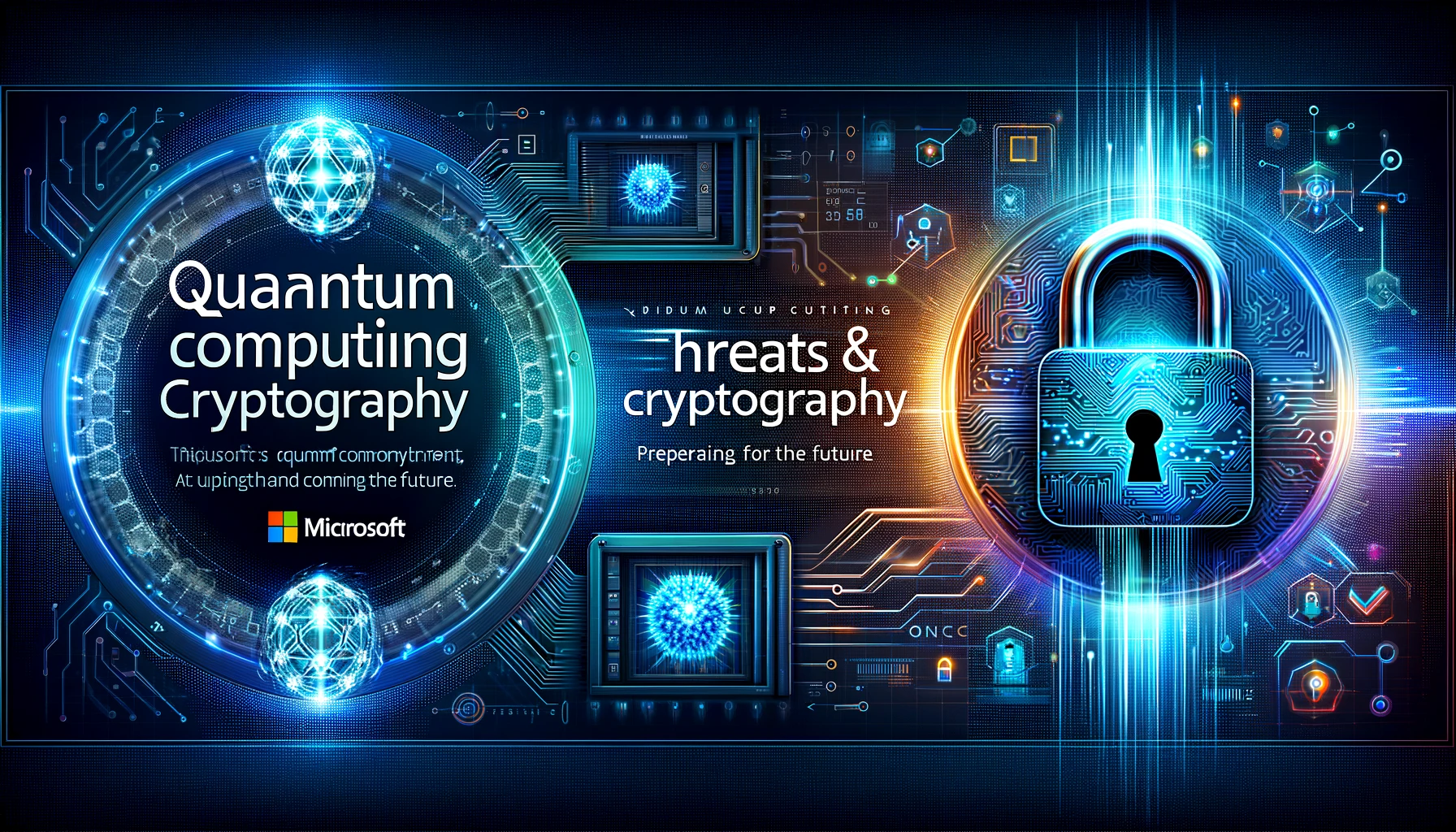The Growing Threat of Quantum Computing to Encryption and Data Security
- Posted by Emily Brown (United Kingdom)
- Categories Technology
- Date September 12, 2024
Quantum computing is one of the most exciting technological advances of the 21st century, with the potential to revolutionize everything from artificial intelligence to drug discovery. However, with its extraordinary processing power, quantum computing poses significant security risks to existing cryptographic systems. Recently, Microsoft updated its core crypto library in response to the looming quantum computing threats, signaling the seriousness of the situation. As the quantum era approaches, organizations must prepare to defend their data against these emerging risks.
In this blog, we’ll explore the potential quantum computing threats, Microsoft’s response to the challenges, and what steps organizations can take to protect their data. We’ll also discuss post-quantum cryptography, quantum-safe encryption, and the importance of updating cryptographic protocols to prevent future vulnerabilities.
Quantum Computing Threats: A Looming Crisis for Encryption
Quantum computing threats are a growing concern for data security. Unlike classical computers, which process information in bits (representing 0s and 1s), quantum computers use qubits, which can represent multiple states simultaneously. This capability allows quantum computers to perform calculations at an exponentially faster rate than classical systems(Palo Alto Networks).
The key concern here is encryption. Most of the current encryption standards—whether for personal data, financial transactions, or government secrets—rely on mathematical problems that are difficult for classical computers to solve, such as factoring large prime numbers. However, quantum computers, using algorithms like Shor’s algorithm, could break these encryptions in seconds.
Shor’s algorithm, specifically, has the potential to factor complex numbers exponentially faster than classical methods, meaning it could easily break public key infrastructure (PKI) encryption, which relies on the difficulty of factoring large primes(Palo Alto Networks). This poses a serious threat to sensitive data across the globe.
Post-Quantum Cryptography: Preparing for the Quantum Threat
As the threat of quantum computing grows, cryptography experts are working on solutions to safeguard data. Post-quantum cryptography refers to cryptographic algorithms that are designed to be secure against attacks from quantum computers. These algorithms are meant to replace current encryption methods, such as RSA and Elliptic Curve Cryptography (ECC), which are vulnerable to quantum attacks.
In response to these risks, quantum-safe encryption standards are being developed to protect sensitive information. Quantum-safe algorithms rely on mathematical problems that are difficult for both classical and quantum computers to solve. The National Institute of Standards and Technology (NIST) is working to standardize these quantum cryptography standards, and several algorithms are in the final stages of consideration for adoption(Palo Alto Networks).
Microsoft’s Crypto Library Update: A Response to Quantum Computing Threats
To address the rising quantum computing security risks, Microsoft updated its core crypto library, preparing its systems for the quantum future. This update includes transitioning to quantum-safe encryption protocols, which will help safeguard Microsoft’s infrastructure from potential future attacks. Microsoft’s update is part of a broader push across the tech industry to strengthen cryptographic defenses against the power of quantum computing.
By focusing on post-quantum cryptography, Microsoft is ensuring that its systems are prepared for both current and future encryption challenges. These cryptography updates are crucial, especially as companies worldwide begin to recognize the potential risks posed by quantum computing(Palo Alto Networks).
How Shor’s Algorithm Threatens Classical Cryptography
Shor’s algorithm, developed by mathematician Peter Shor in the 1990s, represents one of the most significant breakthroughs in quantum computing. This algorithm efficiently factors large numbers, which is the foundation of many classical encryption methods like RSA and ECC. While classical computers would take billions of years to factor these large numbers, a quantum computer running Shor’s algorithm could potentially break the encryption in mere seconds.
The ability of quantum computers to execute Shor’s algorithm means that current encryption techniques, which rely on the hardness of factoring large numbers, could soon become obsolete. The threat is not just theoretical—organizations need to act now by adopting quantum-safe encryption standards to protect their data from quantum decryption(Palo Alto Networks) .
Quantum Computing’s Impact on Encryption: What Lies Ahead
Quantum computing’s impact on encryption is profound. Once fully realized, quantum computing encryption methods could change the way organizations handle everything from financial transactions to personal data. One of the most significant concerns is the possibility of “Harvest Now, Decrypt Later” attacks. In these scenarios, cybercriminals could steal encrypted data today with the intention of decrypting it in the future using a quantum computer(Palo Alto Networks).
To mitigate this risk, it is vital that organizations begin transitioning to post-quantum cryptography. Many experts believe that quantum computing threats could fully materialize within the next decade, making the next few years critical for the adoption of quantum-safe encryption.
Preparing for a Post-Quantum Future
The transition to a post-quantum cryptography world will require a concerted effort from governments, businesses, and technology providers. As quantum computing encryption evolves, it’s essential for organizations to:
- Assess Current Cryptographic Protocols: Evaluate which systems and data rely on vulnerable encryption methods such as RSA and ECC.
- Adopt Quantum-Safe Algorithms: Transition to quantum-safe encryption standards that are resistant to quantum attacks. The algorithms recommended by NIST are expected to be the global standard once finalized.
- Update Core Crypto Libraries: Ensure that key systems, like Microsoft’s core cryptographic libraries, are updated to handle quantum computing security risks. This includes adopting cryptography updates that future-proof systems against quantum-based attacks.
Addressing Quantum Computing Threats Before It’s Too Late
Quantum computing has the potential to break the encryption that safeguards much of the world’s sensitive information. With Shor’s algorithm threatening to break public key encryption and the possibility of future quantum attacks, organizations cannot afford to wait. Microsoft’s recent cryptography update is a step in the right direction, but it’s up to businesses and governments to adopt post-quantum cryptography solutions before quantum computers become a mainstream reality.
The time to prepare is now. By understanding the quantum computing threats on the horizon and adopting quantum-safe encryption standards, organizations can secure their data for the quantum future.
For more insights on the latest technological developments and their impact on global security, visit Regent Studies. Be proactive in preparing for a post-quantum world, as quantum computing will soon redefine the landscape of data encryption.
Previous post
Nintendo Switch 2 Release Date and Trailer: What the Rumors Tell Us So Far
Next post
Exploring the Huawei Mate X3: The Foldable Phone with Advanced Specs and Multiple Screens
You may also like




